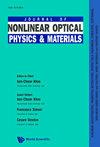研究UTe2的超导性极限
IF 2.3
4区 物理与天体物理
Q2 OPTICS
引用次数: 4
摘要
自旋三重态体超导体是一种很有前途的拓扑超导途径,而UTe2是最近发现的竞争者。然而,UTe2的超导性质随着合成路线的不同而变化很大,甚至已经报道了非超导单晶。为了了解抑制超导性的驱动机制,我们结合热力学和x射线衍射测量,研究了生长在非超导边界(生长温度~ 710°C)附近的UTe2单晶。比热测量结果表明,在非超导边界附近,超导体积急剧减小,剩余比热系数随之增大。值得注意的是,这些晶体是不均匀的,在比热测量中表现出明显的双重转变,类似于在更高温度(∼1000°C)下生长的样品。我们的单晶x射线衍射测量揭示了两个重要的调谐参数:铀空位和沿c轴的原子位移,这表明超导体积减小的样品增加了两倍。我们的研究结果强调了局部无序在铀-铀二聚体中的关键作用,并表明在接近UTe2超导极限的地方更有可能出现明显的双超导转变。本文章由计算机程序翻译,如有差异,请以英文原文为准。
Investigating the limits of superconductivity in UTe2
Spin-triplet bulk superconductors are a promising route to topological superconductivity, and UTe2 is a recently discovered contender. The superconducting properties of UTe2, however, vary substantially as a function of the synthetic route, and even nonsuperconducting single crystals have been reported. To understand the driving mechanism suppressing superconductivity, we investigate UTe2 single crystals grown close to the nonsuperconducting boundary (growth temperature ∼710 ∘C) through a combination of thermodynamic and x-ray diffraction measurements. Specific heat measurements reveal a sharp decrease in the superconducting volume and a concomitant increase in the residual specific heat coefficient close to the nonsuperconducting boundary. Notably, these crystals are inhomogeneous and show an apparent double transition in specific heat measurements, similar to samples grown at much higher temperatures (∼1000 ∘C). Our single crystal x-ray diffraction measurements reveal that there are two important tuning parameters: uranium vacancies and the atomic displacement along the c axis, which shows a twofold increase in samples with a reduced superconducting volume. Our results highlight the key role of local disorder along the uranium-uranium dimers and suggest that the apparent double superconducting transition is more likely to emerge close to the superconducting limits of UTe2.
求助全文
通过发布文献求助,成功后即可免费获取论文全文。
去求助
来源期刊
CiteScore
3.00
自引率
48.10%
发文量
53
审稿时长
3 months
期刊介绍:
This journal is devoted to the rapidly advancing research and development in the field of nonlinear interactions of light with matter. Topics of interest include, but are not limited to, nonlinear optical materials, metamaterials and plasmonics, nano-photonic structures, stimulated scatterings, harmonic generations, wave mixing, real time holography, guided waves and solitons, bistabilities, instabilities and nonlinear dynamics, and their applications in laser and coherent lightwave amplification, guiding, switching, modulation, communication and information processing. Original papers, comprehensive reviews and rapid communications reporting original theories and observations are sought for in these and related areas. This journal will also publish proceedings of important international meetings and workshops. It is intended for graduate students, scientists and researchers in academic, industrial and government research institutions.

 求助内容:
求助内容: 应助结果提醒方式:
应助结果提醒方式:


